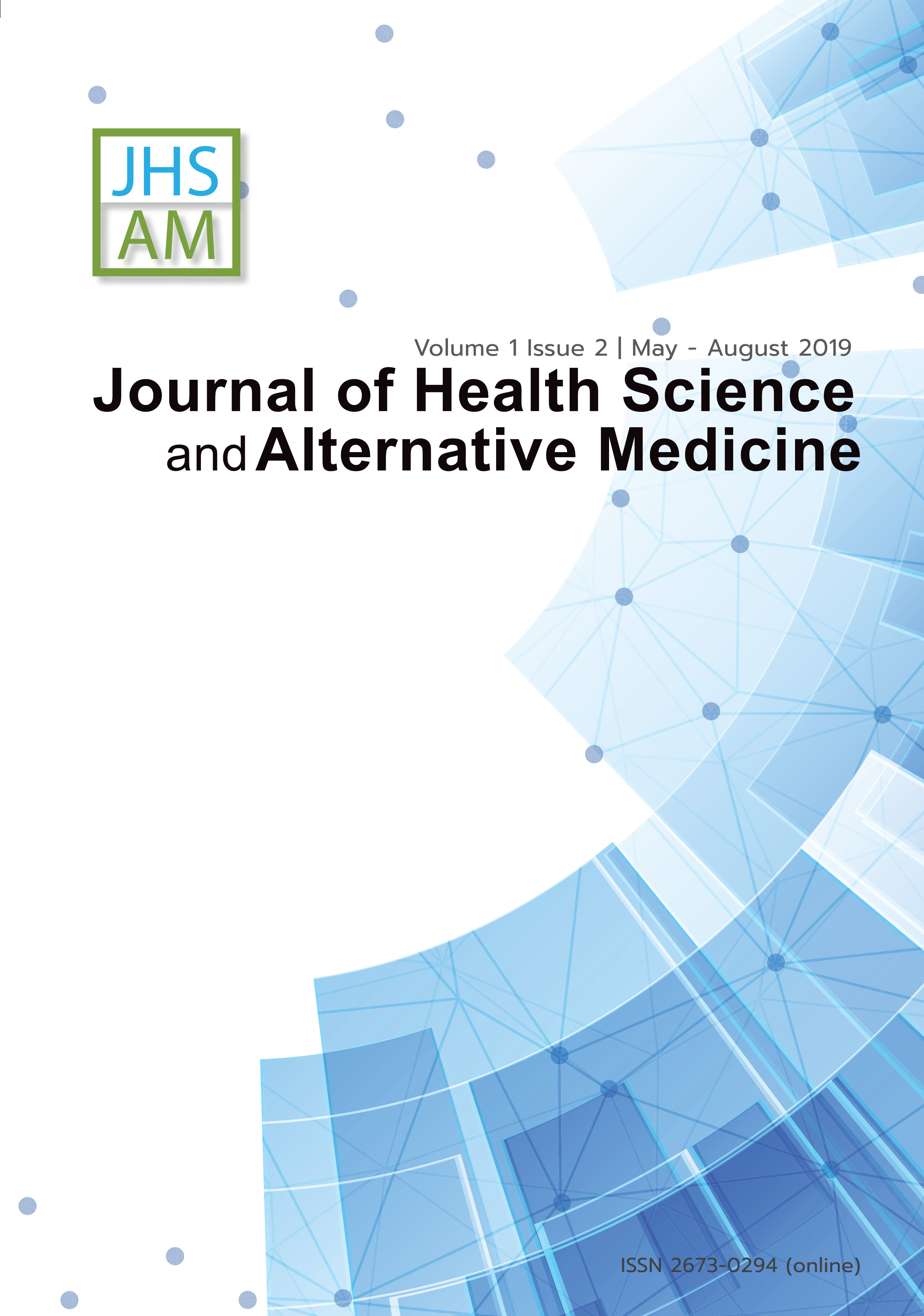Pharmacognostic Specifications of Acanthopanax trifoliatus leaves
Main Article Content
Abstract
Introduction: Acanthopanax trifoliatus or Phak-pam has been popularly used as both medicinal plant and food plant in Northern of Thailand. Objective: The present study aims to investigate the pharmacognostic specifications to authenticate A. trifoliatus leaves. Methods: Leaves of A. trifoliatus from 12 sources throughout Thailand were collected, then morphological and physiochemical determinations following WHO guideline of quality control methods for medicinal plant materials were used to investigate leaves samples. Results: Morphological identification revealed remarkable microscopic characters were rosette crystals of calcium oxalate and anisocytic stomata. Physico-chemical parameters including; loss on drying, total ash, total acid insoluble ash, water content, ethanol soluble extractive and water soluble extractive values were found to be 1.08±0.17, 10.52±1.33, 1.67±0.30, 9.87±1.32, 6.76±4.41 and 6.67±0.57, respectively. A. trifoliatus leaves contained traces of volatile oil. Conclusion: This study provided useful information of pharmacognostic specification that could be used for authentication, identification and quality control of A. trifoliatus leaves.
Article Details
JHSAM publishes all articles in full open access, meaning unlimited use and reuse of articles with appropriate credit to the authors.
All our articles are published under a Creative Commons "CC-BY-NC-ND 4.0". License which permits use, distribution and reproduction in any medium,
provided that the original work is properly cited and is used for noncommercial purposes.
References
[2] Sithisarn P. Jarikasem J. Antioxidant Activity of Acanthopanax trifoliatus. Med Princ Pract 2009;18:393–8.
[3] Hamid R, Erijuffaldi A.F. Anti-inflammatory effect of the ethanolic extract of Acanthopanax trifoliatus (L.) Merr leaves. Int J Pharm Pharm Sci. 2012;4:104-6.
[4] Sithisarn P, Rojsanga P., Jarikasem, S., et al. Ameliorative Effects of Acanthopanax trifoliatus on Cognitive and Emotional Deficits in Olfactory Bulbectomized Mice: An Animal Model of Depression and Cognitive Deficits. eCAM. 2013;2013:1-9.
[5] Sithisarn P, Jarikasem S., Thisayakorn K. Phytochemicals – Bioactivities and Impact on Health. Croatia: InTech; 2011.
[6] World Health Organization. Quality Control Methods for Medicinal Plant Materials. Geneva: WHO Press; 2011.
[7] Anitha R, Sandhiya, T. Occurrence of calcium oxalate crystals in the leaves of medicinal plants. IJP. 2014;1:389-93.
[8] Mukherjee P. Quality Control of Herbal Drugs: An Approach to Evaluation of Botanicals. 5th ed. New Delhi: Business Horizons; 2012.
[9] Thitikornpong W, Phadungcharoen, T. , Sukrong, S. Pharmacognostic evaluations of Lagerstroemia speciose leaves. J Med Plants Res. 2011;5:1330-7.

